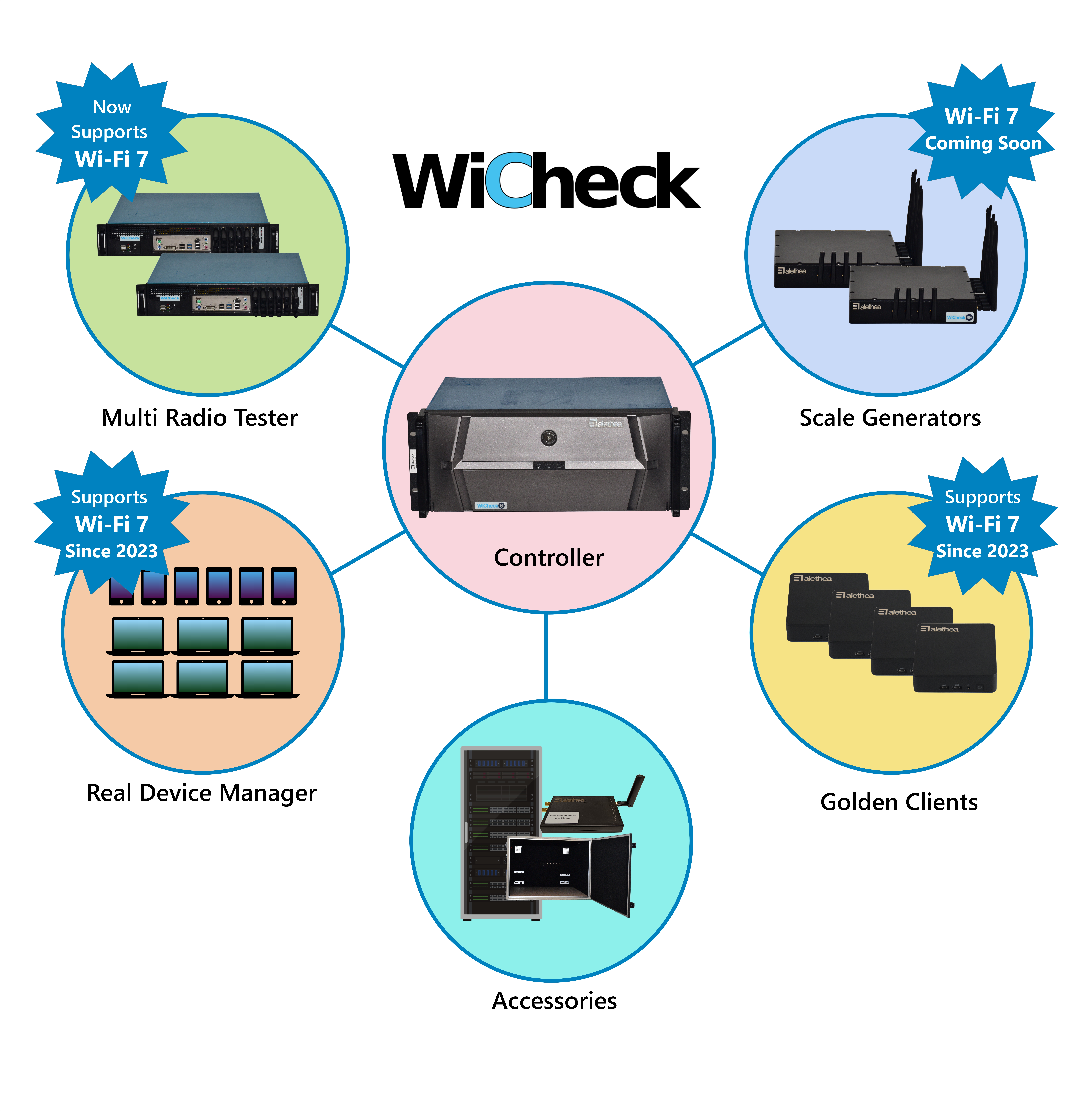Whether it’s streaming videos, making video calls, or simply browsing the internet, we depend on fast and reliable wireless connections. But what happens when multiple devices compete for limited bandwidth, causing congestion and reducing performance? This is where Multi-Link Operation (MLO) can provide a potential solution.
MLO is a feature that empowers Wi-Fi Access Points (APs) and clients to transmit and receive data across multiple channels or frequencies simultaneously. Its primary goals are to reduce latency during network congestion and increase overall throughput when aggregating multiple links. In this blog, we will explore the nuances of MLO, its types, test setups, considerations, expected results, and its importance in managing congestion and interference in Wi-Fi networks.
Types of Multi-Link Operation (MLO)
MLO comes in various flavors, each designed for various kinds of hardware expected to be used in real life:
- Multi-Link Multi-Radio Simultaneous Transmit Receive (MLMR STR)
- Multi-Link Multi-Radio Non-Simultaneous Transmit Receive (MLMR NSTR)
- Enhanced Multi-Link Single Radio (EMLSR)
- Multi-Link Single Radio (MLSR)
MLO Test Scenarios
Let’s delve into the different test scenarios and considerations when evaluating the performance and effectiveness of MLO
1. MLO Test Setup with No Noise

Testing Considerations:
- Conduct TCP throughput tests for both uplink (UL) and downlink (DL).
- Evaluate all permissible link combinations supported by the AP/client pair, including 5+5, 2.4+5, 2.4+6, 5+6, and 6+6.
- Test with clients that are configured to support various Multi-Link Modes.
- Continuously monitor channel utilization on both channels throughout the testing process.
Results and Anticipated Outcomes:
- The 6+6 configuration is expected to deliver the highest performance due to its utilization of a 320 MHz channel.
- It is worth noting that Multi-Link Multi-Radio Simultaneous Transmit Receive (MLMR STR) is the sole mode capable of aggregation. Consequently, other modes may not exhibit improvements compared to single-link configurations.
2. MLO Test Setup 1 MLD client (Noise on 1 link)

Testing Considerations:
- Chart TCP throughput across a range of interference levels, varying from 10% to 100% with increments of 10% and then returning to lower levels.
- Evaluate all permissible link combinations supported by the AP/client pair, encompassing 5+5, 2.4+5, 2.4+6, 5+6, and 6+6 configurations.
- Examine performance with clients configured to support various Multi-Link Modes.
- Continuously monitor channel utilization on both available channels throughout the testing procedure.
Results and Anticipated Outcomes:
- Comparing MLMR STR and EMLSR performance is important, with an expectation that they prefer the noise-free link after noise generation begins.
- Monitoring response times is crucial.
- The MLSR case is anticipated to exhibit similar behavior over time.
3. MLO Test Setup 1 MLD client (Noise on 2 links)

Testing Considerations:
- TCP throughput test starts with a 50:50 ratio of noise and saturates the link
- Test all allowed link combinations supported by the AP/client pair (5+5, 2.4+5,2.4+6,5+6,6+6)
- Test with clients supporting different Multi-Link Modes
- Constantly measure Channel utilization on both channels
- TCP throughput test with dynamic noise on 2 channels (switch with various levels)
- TCP bursty traffic with latency measurements in a single direction
- TCP traffic with bursty traffic along with some background application
- TCP traffic in both UL and DL Directions
Results and Anticipated Outcomes:
- Compare throughput and latency between MLMR STR and EMLSR.
- Explore performance in scenarios with different channel bandwidths on these links (asymmetric conditions).
- Record response times for any changes observed during testing.
- Keep in mind that the MLSR case might exhibit poorer performance.
- Measure and compare throughput for non-bursty traffic conditions.
- Key metrics of interest include latency during bursty traffic scenarios.
- Pay particular attention to the performance of EMLSR in this context.
4. MLO Test Setup Multiple MLD clients (Noise only on 1 link)

Testing Considerations:
- Introduce clients sequentially, one by one.
- Measure both aggregate and individual throughputs as clients are added.
Results and Anticipated Outcomes:
- Verify if switching behavior aligns with expectations when a large number of clients are present.
- Assess the performance of devices with varying Multi-Link Modes.
- Evaluate whether overall throughput improves compared to non-Multi-Link cases when MLO is disabled at the AP.
6. MLO Test Setup Multiple clients (MLD) and Non-MLD clients

Testing Considerations:
Configure non-multi-link (MLD) clients to associate with static channels (link1/link2).
Results and Anticipated Outcomes:
- Examine how the AP manages MLD clients compared to legacy clients across different links.
- Check for any potential bias or whether legacy clients experience improved performance.
- Investigate traffic partitioning in scenarios with minimal noise to understand how data is distributed between clients.
Equipment Needed:
To carry out these tests effectively, you’ll need a range of equipment, such as an 802.11be-capable Access Point (AP), multiple compatible Stations (STAs), programmable attenuators, RF chambers, a Wi-Fi noise generator, a multi-link sniffer, tools for measuring channel occupancy, and essential accessories.

Multi-Link Operation (MLO) is a critical feature in modern Wi-Fi networks, aimed at managing congestion and interference effectively. Its complexity at both the AP and client ends presents a challenge, but the benefits in terms of reduced latency and increased throughput make it worth exploring. Additionally, MLO has potential applications in mesh backhaul for interference mitigation. As we’ve highlighted, thorough testing and the use of specialized tools are essential to fully harness the capabilities of MLO in optimizing Wi-Fi performance.
WiCheck, the universal Wi-Fi testing solution, now offers support for Wi-Fi 7. With this new capability, you can conduct network tests using 16 to 128 Wi-Fi 7 clients, capitalizing on the enhanced features such as support for 320 MHz bandwidth, 4K QAM, MLO, and many other advanced functionalities.
WiCheck serves as an excellent reference client for MLO testing, offering the added advantage of functioning as a packet sniffer to capture air-borne packets. This versatile tool comes equipped with pre-built test packs, facilitating tasks like sanity checks, performance measurement, application traffic simulation, and dedicated MLO testing.
For inquiries or further information, please contact:




